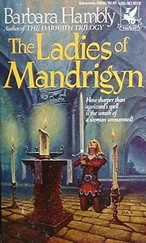One of the most striking features I have come across in my own studies of slave accounts of slavery has been the enormous degree to which the conditions of any individual slave’s life depended upon the individual slave-owner. Situations of what appear to be warm affection existed side by side with truly subhuman cruelty and jaw-dropping callousness. It all depended on who and where you were, each slave-owning household a microclimate from which, for a slave, there was no possibility of legal redress.
I have made the arbitrary decision, based on the good opinion of Jefferson held by his friends (and in the few recorded instances, by his slaves also—though the ones who didn’t like him probably wouldn’t have felt able to say so), that he wasn’t the kind of man who would force or coerce sex with an unwilling fifteen-year-old girl.
I have also made the arbitrary decision that there was more to the relationship than a bargain for sexual favors in exchange for protection, privilege, and freedom for Sally’s children.
Jefferson kept Sally as his concubine despite the scandal in 1802 (their youngest two children were born in 1805 and 1808), and after he took Sally as his concubine in 1788, there is not even speculation that he was involved with any other woman, white or black. Their older surviving sons, Tom and Beverly, simply vanish from the Monticello records; according to their son Madison Hemings in an interview in March of 1873, their daughter Harriet (the second daughter of that name, born in 1801) “married a white man in good standing in Washington City.” Madison and Eston, presumably because their features were too African to allow them to “pass,” were freed in Jefferson’s will.
I have chosen to follow Fawn Brodie (and James Callendar) in portraying Young Tom as alive and present at Monticello at least up to 1800, rather than simply accepting Madison Hemings’s assertion that his eldest brother “died soon after” birth. Either way, Young Tom was probably gone from Monticello before Madison Hemings was born.
It must be remembered that Jefferson—and Sally—both grew up in a society in which it was acceptable (among men, anyway) and fairly commonplace—though by no means universal—for men to have mistresses, and for Southern slaveholders to have sexual relations with the women they legally owned. I think it should also be borne in mind that Sally had known Jefferson literally all her life, and that the Hemings family formed a sort of sub-caste at Monticello, somewhere between ordinary slaves and the sort of shadow-families that in French Louisiana would have been free and informally acknowledged.
One can only speculate as to why Jefferson did not free Sally in his will. Patsy Randolph—who left her husband shortly after Jefferson’s death in 1826—freed her, and took great care to solemnly assure her sons that Sally Hemings’s children had been fathered by Jefferson’s nephew Peter Carr. Sally went to live with her sons Madison and Eston in a house near Monticello, until her death in 1835.
Whether Sally knew anything about Gabriel Prosser’s attempted revolt or not—or what she would have chosen to do if she had known—I have not the slightest idea.
All writers of fiction about historical personages have to make choices about how to portray events and relationships for which there is little or no evidence. I have done my best to be true to the known facts, about Jefferson and Sally and about the world in which they lived. To those who feel I should have told the story otherwise—and to those who have been offended by my choices—I apologize.
I have used the word “concubine” in its original literal meaning, that of a servant or slave-woman who sleeps with the master on a regular or semiregular basis.
CAST OF CHARACTERS
Real life is not tidy, and the story of any couple is the story of their families as well (and in the eighteenth and early nineteenth centuries, this included servants). I have dates for some; for others I do not. For others I have found several different birth and death dates, with as much as ten years’ variation for the same person. Fictional characters are marked with an asterisk*. Though many characters overlap from section to section, I have listed them by the section in which they primarily occur; and by the name under which they are primarily known in the book. A woman’s maiden name and alternate married names are in parentheses, alternate first names (either nicknames or real names for those dozen or so women all named Martha) are in brackets.
MARTHA
Anna Maria (Dandridge) Bassett 1739–1777—Favorite sister of Martha, married Burwell Bassett in 1757. Mother of Fanny Bassett Washington Lear, one of Martha’s many surrogate daughters.
Fanny (Bassett) Washington (Lear) 1767–1796—Martha’s favorite niece, successively married to George’s nephew (and secretary) Augustine Washington, then at his death to George’s secretary Tobias Lear.
Aaron Burr 1756–1836—The dark star of the Founding Fathers; briefly Washington’s aide-de-camp, then Colonel in the Continental Army, Senator from New York, Thomas Jefferson’s Vice President (and so far the only United States Vice President to serve while under indictment for murder), and would-be Emperor of Mexico.
Eleanor (Calvert) Custis (Stuart) 1758–1811—Jacky’s wife and mother of Martha’s four grandchildren. After Jacky’s death she married Dr. David Stuart of Alexandria, and had numerous (twelve in some accounts, sixteen in others) children by him.
Daniel Parke Custis 1710–1757—First husband of Martha Washington and father of her four children.
Jacky Custis 1754–1781—[John Parke Custis] Only child of Martha and Daniel Custis to survive to adulthood, father (by Eleanor Calvert) of Martha’s four grandchildren.
Patcy Custis 1756–1773—[Martha Parke Custis] Only daughter of Martha and Daniel Custis to survive childhood; suffered from seizures, and died of one at age seventeen.
Eliza (Custis) Law 1776–1832—Oldest daughter of Jacky and Eleanor Custis. Married Thomas Law in 1796.
Pattie (Custis) Peter b. 1777—[Martha Parke Custis] Second daughter of Jacky and Eleanor Custis. Married Thomas Peter in 1795.
Nelly (Custis) Lewis 1779–1852—[Eleanor Parke Custis] Third daughter of Jacky and Eleanor Custis. Semiadopted by Martha and George at Jacky’s death. Married George’s nephew Lawrence Lewis in 1799.
Wash Custis 1781–1857—[George Washington Parke Custis] Only son of Jacky and Eleanor Custis. Semiadopted by Martha and George at Jacky’s death. Married Mary Ann Fitzhugh; their daughter, Mary, married Robert E. Lee. (Thus most of the Washington family mementos ended up at Arlington.) Three of their sons were also generals in the Confederate Army.
Nan Dandridge— Daughter of Martha Dandridge Washington’s father, John Dandridge, by one of his slaves. She was employed in the Washington household at Mount Vernon and in 1780 gave birth to a child, William, by Jacky Custis.
“Citizen” Édouard Genêt 1763–1834—First minister sent by Revolutionary France to the U.S., he attempted to meddle in U.S. policy, commissioned American privateers to prey on British shipping, and tried to field, from the U.S., expeditions against France’s enemies. When, at Washington’s request, he was recalled, he defected to the U.S., married the daughter of the Governor of New York, and lived happily ever after.
Alexander Hamilton 1757–1804—[Hammy, Alec] Washington’s Secretary of the Treasury and much-loved surrogate son. Known for his financial brilliance, military and political ambition, wide-ranging amours, and verbal viciousness about his political opponents, a trait which eventually got him shot.
Читать дальше





